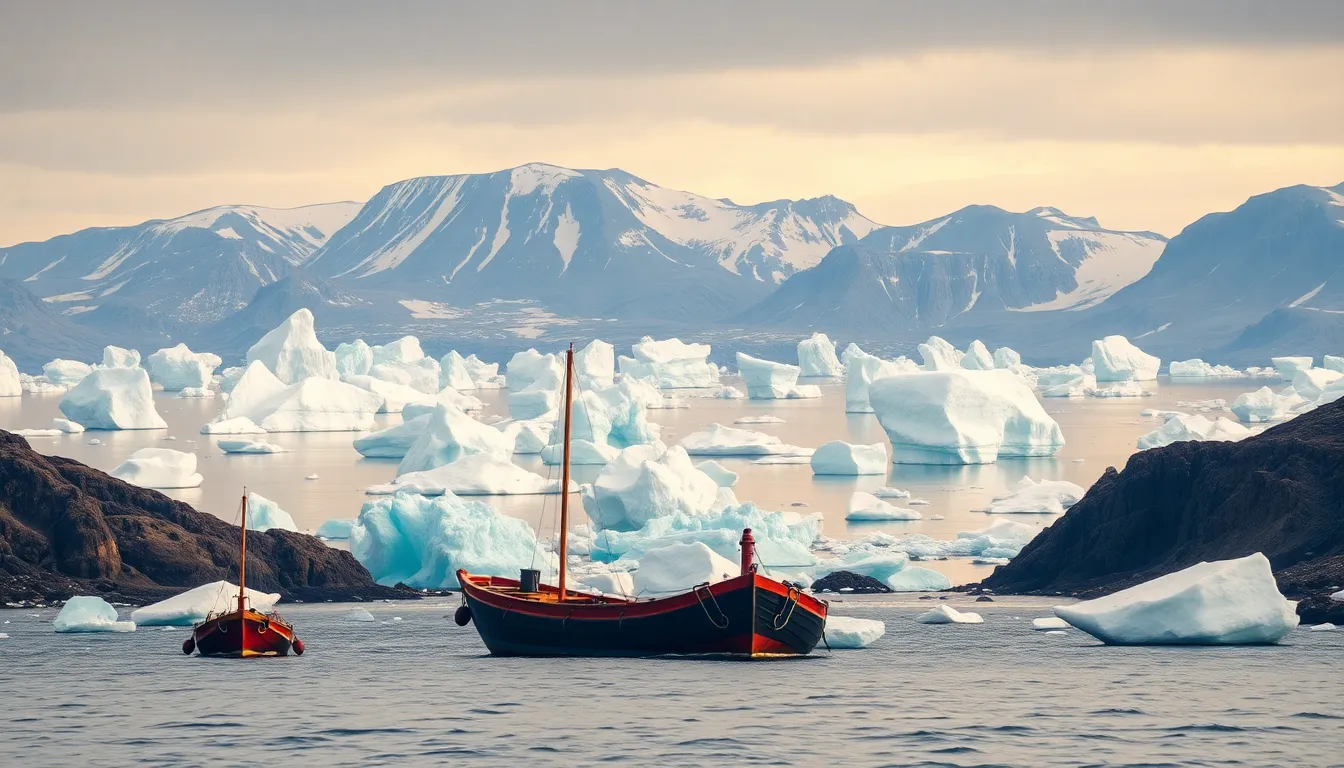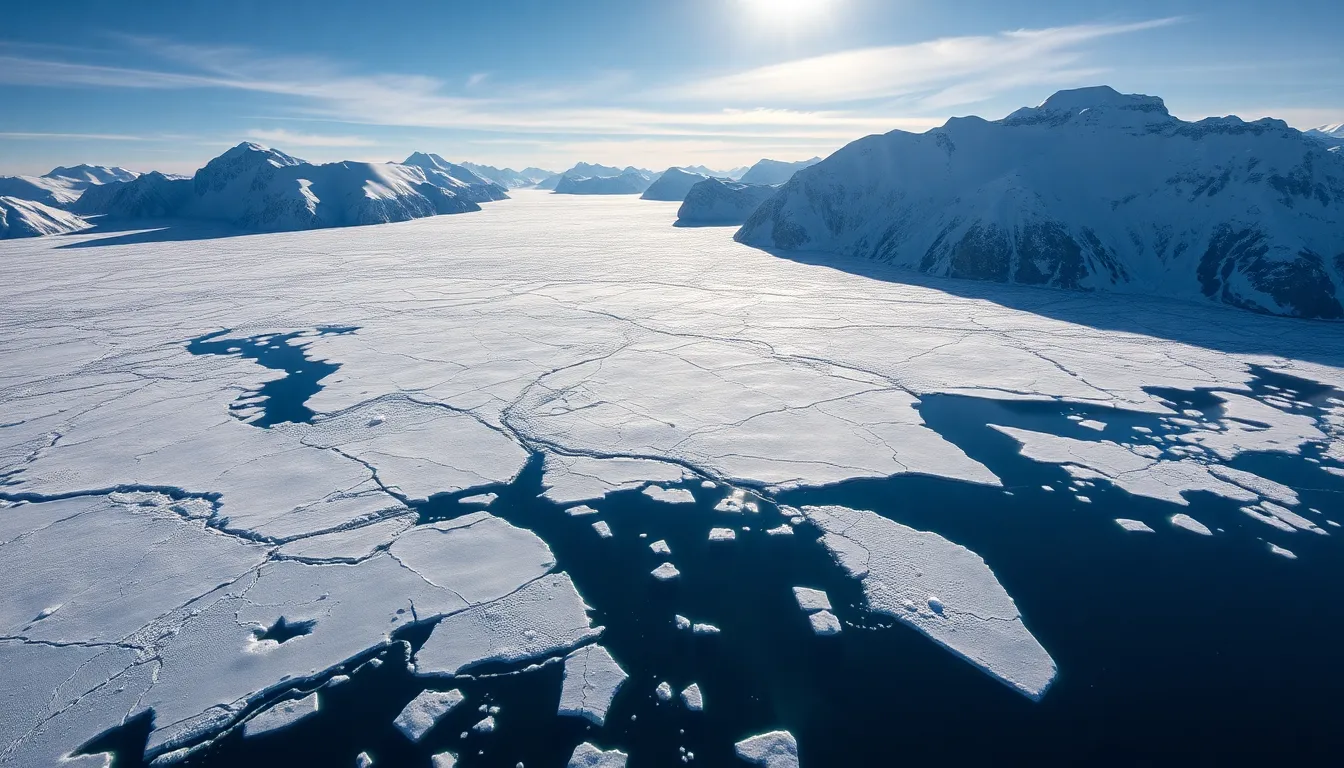Greenland often sparks curiosity due to its vast icy landscapes and unique position on the world map. Many people wonder about its geographical classification and which continent it belongs to. While it’s the largest island on Earth, its continental affiliation can be a bit confusing.
Positioned between the Arctic and Atlantic Oceans, Greenland is politically associated with Europe but geographically linked to North America. This intriguing mix raises questions about cultural identity and geopolitical ties. Understanding Greenland’s continental status not only sheds light on its geography but also highlights its significance in global discussions about climate change and indigenous rights.
Table of Contents
ToggleGeographic Overview of Greenland
Greenland occupies a unique geographic position as the largest island on Earth. It is situated between the Arctic and Atlantic Oceans. The island spans approximately 836,331 square miles, making it the 12th largest territory globally.
Greenland’s landmass predominantly features an expansive ice sheet covering about 80% of its surface area. This ice sheet significantly influences global sea levels and climate patterns. Coastal regions showcase a variety of fjords and glaciers, creating stunning landscapes.
While politically part of Europe due to its association with Denmark, Greenland geographically aligns more closely with North America. The island lies northeast of Canada across Baffin Bay and is approximately 1,500 miles from the nearest point in Norway.
Greenland’s location places it at the heart of several geopolitical interests, especially regarding natural resources and climate change. The region’s remote communities and indigenous populations have rich cultural histories that contribute to its unique identity. Understanding Greenland’s geographic context is vital for appreciating its political, cultural, and environmental dynamics.
Historical Context of Greenland

Greenland’s history reflects its unique geographic and cultural positioning. Its past influences current political relations and cultural identities.
Colonial Influence
Colonial influences have significantly shaped Greenland’s trajectory. Norse settlers arrived in the 10th century, establishing small communities. The Inuit, the island’s indigenous inhabitants, faced cultural shifts due to European contact. In the 18th century, Denmark-Norway claimed Greenland, officially marking it as a colony. This governance led to various social and economic changes, including the introduction of European trade practices. By the late 19th century, Denmark formalized control, leading to development initiatives that aimed to integrate Greenland into the Danish Empire. The legacy of these colonial activities continues to affect Greenland’s cultural identity and its relationship with Denmark.
Modern Associations
Modern associations redefine Greenland’s international presence. Greenland became a self-governing territory within the Kingdom of Denmark in 2009, allowing greater autonomy. This shift enabled Greenland to assert its interests in natural resource management and environmental policies. Internationally, Greenland seeks to strengthen ties, especially with the Arctic Council and the European Union, focusing on climate change and sustainable development. The influence of global geopolitics, particularly involving the United States and China, remains pronounced as countries vie for strategic partnerships. Today’s political landscape highlights the importance of balancing modernization with respect for indigenous rights and cultural heritage.
Greenland’s Geopolitical Status
Greenland’s geopolitical status includes its self-governance framework and its relationship with Denmark, influencing its political landscape and cultural identity.
Self-Governance
Greenland became a self-governing territory within the Kingdom of Denmark in 2009, marking a significant shift in its political autonomy. The Self-Government Act provides authority over various areas, including education, healthcare, and natural resources. This governance structure allows Greenland to assert its interests and develop policies aligned with its unique cultural and environmental context. The Inuit population plays a central role in this governance, promoting local representation and decision-making processes that reflect their values and traditions.
Association with Denmark
Greenland’s association with Denmark remains pivotal in its geopolitical status. While Greenland exercises self-governance, Denmark retains control over defense and foreign affairs, creating a unique balance of power. This relationship enables Greenland to leverage Danish support while pursuing its interests on the global stage. Economic ties also persist, with Denmark providing financial assistance that supports infrastructure development and social services. This complex association shapes Greenland’s approach to international relations, particularly as it engages with organizations like the Arctic Council and explores partnerships with nations such as the United States and China.
Cultural Aspects of Greenland
Greenland’s culture reflects a blend of indigenous traditions and contemporary influences. This rich cultural tapestry is shaped by its inhabitants, especially the Inuit, with deep-rooted traditions impacting identity and community.
Indigenous Peoples
Indigenous peoples primarily include the Kalaallit, who form the vast majority of Greenland’s population. Their ancestry traces back over 4,500 years, exhibiting resilience against harsh Arctic conditions. Historically, their subsistence relied on hunting, fishing, and gathering, fostering a deep connection to the land and sea. Traditional practices, such as drum dancing and storytelling, preserve their cultural heritage while promoting community bonds. Today, indigenous rights remain central in discussions about resource management, self-governance, and climate change.
Language and Traditions
Greenlandic, an Inuit language, serves as the official language, with three dialects: Kalaallisut, Tunumiit oraasiat, and Inuktun. Language plays a crucial role in cultural expression and identity. Traditional practices include the art of carving, which showcases skills passed down through generations, while unique culinary traditions emphasize the use of local ingredients, such as seal and whale. Festivals, like the National Day, celebrate cultural heritage and foster national pride, highlighting the importance of both indigenous traditions and modern influences on Greenland’s identity.
Natural Environment of Greenland
Greenland’s natural environment features a diverse and unique landscape, shaped by its geographical position and climatic conditions. The country includes vast ice sheets, jagged fjords, rocky coasts, and tundra regions.
Ice Coverage and Climate
Ice covers approximately 80% of Greenland’s land area, primarily manifested in the Greenland Ice Sheet. This ice sheet plays a crucial role in global sea levels, as it stores about 2.85 million cubic kilometers of ice. The region’s climate is classified as Arctic, marked by long, harsh winters and short, cool summers, making it an area of interest for climate change research.
Flora and Fauna
Flora consists mainly of hardy tundra vegetation, including mosses, lichens, and low shrubs. Despite the cold, some flowering plants thrive during the brief summer months. Fauna includes polar bears, seals, and a variety of migratory birds, adapted to survive in extreme conditions. The waters surrounding Greenland support rich marine life, with species such as whales, fish, and invertebrates contributing to the ecosystem.
Coastal and Inland Landscapes
The coastal regions of Greenland showcase dramatic fjords, which formed through glacial erosion, creating deep waterways lined with steep cliffs. Inland, the landscape features mountain ranges, glaciers, and expansive ice fields. Terrain diversity supports various ecosystems, fostering a balance of land and marine environments that are critical for sustaining both biodiversity and indigenous livelihoods.
Environmental Concerns
Climate change notably impacts Greenland’s environment. Melting ice and permafrost contribute to rising sea levels, affecting coastal communities and ecosystems. Increased temperatures also influence wildlife habitats, altering species distribution and food sources. These changes necessitate ongoing monitoring and action to address the environmental challenges facing the region.
Conservation Efforts
Conservation initiatives aim to protect Greenland’s unique ecosystems from the impacts of resource extraction, climate change, and industrial activities. Efforts include creating marine protected areas and advocating for sustainable practices among local communities. Research collaborations between local authorities, scientists, and indigenous groups enhance understanding of environmental issues, fostering a collective approach to preservation.
Greenland’s unique position as a large island straddling the line between Europe and North America offers a fascinating glimpse into its complex identity. The interplay of geography and politics shapes its role on the global stage. As climate change continues to impact its vast ice sheet and ecosystems, understanding Greenland’s continental status becomes increasingly vital.
The island’s rich cultural heritage and the resilience of its indigenous communities play a crucial role in navigating modern challenges. As Greenland asserts its autonomy and engages with international partners, the need to balance development with environmental stewardship and cultural preservation remains paramount. This multifaceted narrative underscores Greenland’s significance beyond mere geography, highlighting its importance in discussions about climate, culture, and geopolitics.



